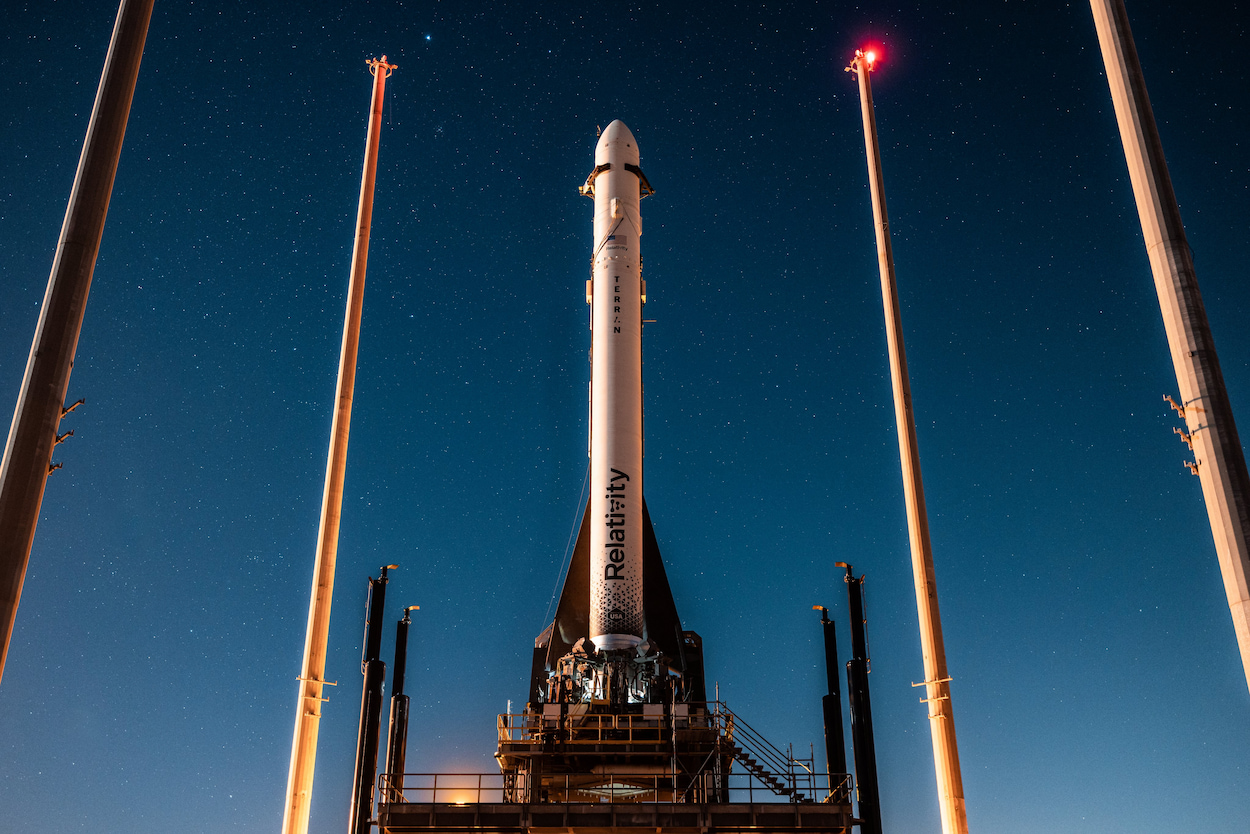
According to a public YouTube stream (and now a tweet from the company), Relativity will launch its first Terran 1 rocket in the coming weeks out of Cape Canaveral Space Force Station in Florida.
A big step forward for any launch provider
Launching your first rocket is a big step for every company. No matter how long or how much you spend on development. There’s always a high chance of something going wrong, so many companies choose not to livestream this moment.
However, Relativity looks not to be going down that same road. Like Firefly, their first rocket’s launch will be live-streamed for us all to see. Originally discovered as an unlisted stream, the stream is now public and gives us some details about the mission and the company.
Relativity is scheduled for its first launch of Terran 1, called “GLHF” (Good Luck, Have Fun), from Launch Complex 16 in Cape Canaveral, Florida. Our launch window opens at 1300ET on March 8, 2023. This launch of Terran 1 is the first orbital attempt by Relativity and will not include a customer payload.
Standing 110 ft. tall and 7.5 ft. wide, Terran 1 is the largest 3D printed object to attempt orbital flight. As a two-stage, expendable rocket, Terran 1 has nine 3D printed Aeon engines on its first stage and one Aeon Vac on its second stage.
Like its structure, all Relativity engines are entirely 3D printed, and use liquid oxygen (LOX) and liquid natural gas (LNG), which are not only the best for rocket propulsion, but also for reusability, and the easiest to eventually transition to methane on Mars.
Life to a once-retired launch pad
SLC-16, Relativity’s launch site in Florida, is one of the many launch pads on “Missile Row” over on the Space Force side of the spaceport. This pad launched Titan and Pershing missiles into the Atlantic Ocean for testing.
Many of these launch pads have been repurposed by commercial companies to launch new rockets for the growing commercial satellite market. On the south side, Blue Origin is building a massive launch complex on top of SLC-36. Just a few complexes north, you have SpaceX with its two landing zones for its Falcon 9 first-stage boosters. Finally, Firefly is building a launch site at SLC-20 for its rocket that has already launched twice out of Vandenberg, California.
The last rocket to launch from SLC-16 was a Pershing II missile back in 1988. The pad was decommissioned in part of the Intermediate-Range Nuclear Forces Treaty signed between the US and USSR that same year. However, Relativity plans to breathe life back into the launch pad with its Terran 1 rocket and, eventually, its fully reusable Terran R rocket.
FTC: We use income earning auto affiliate links. More.

Comments